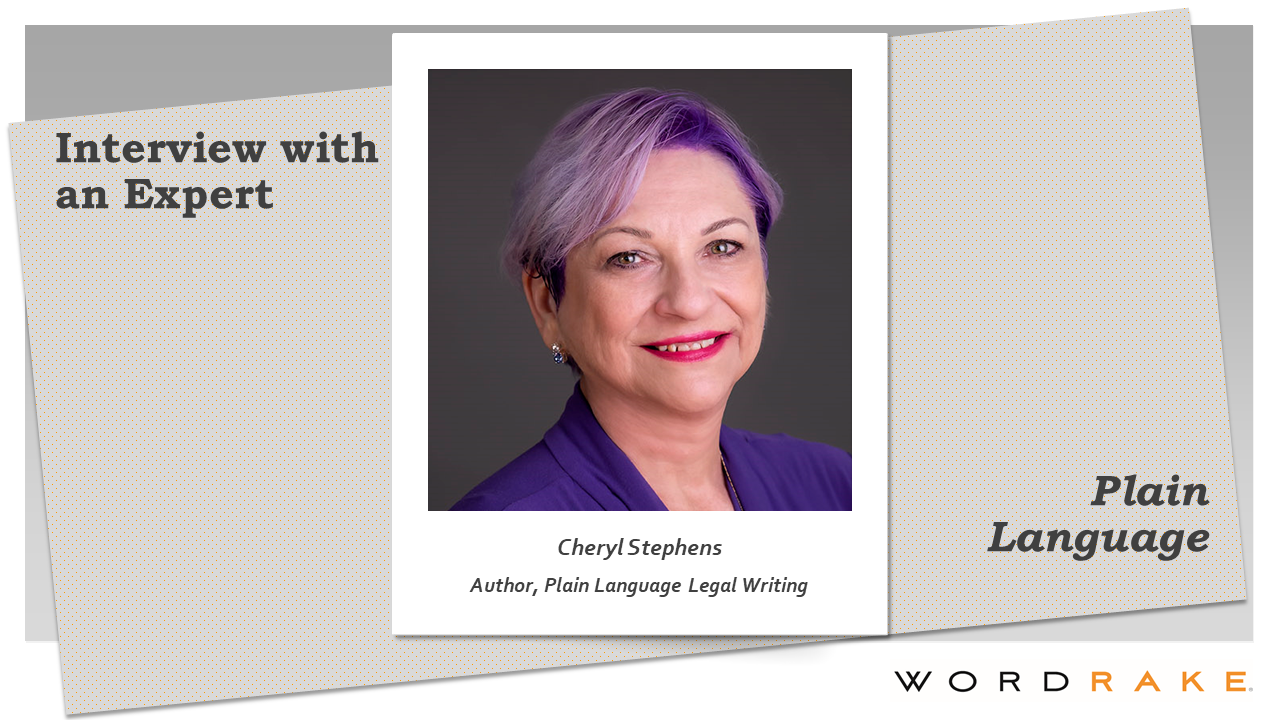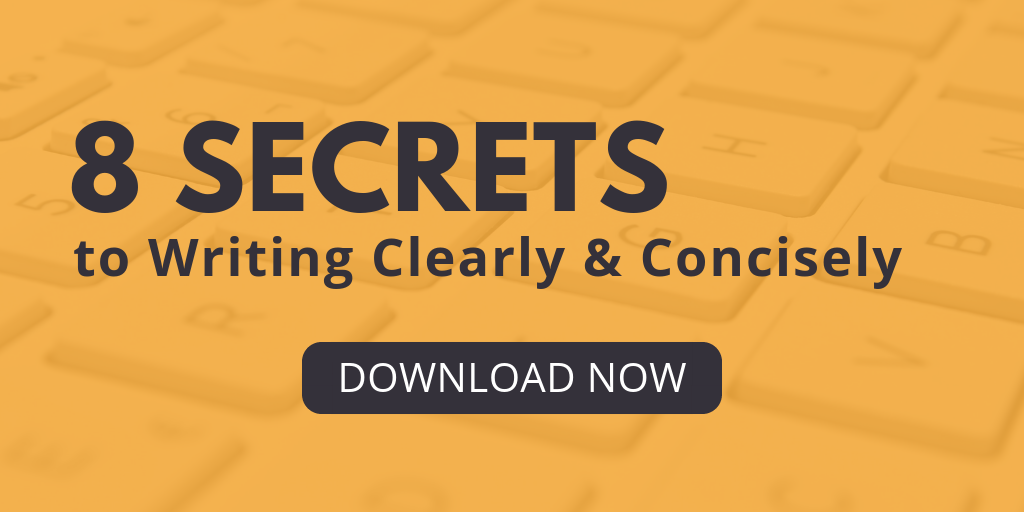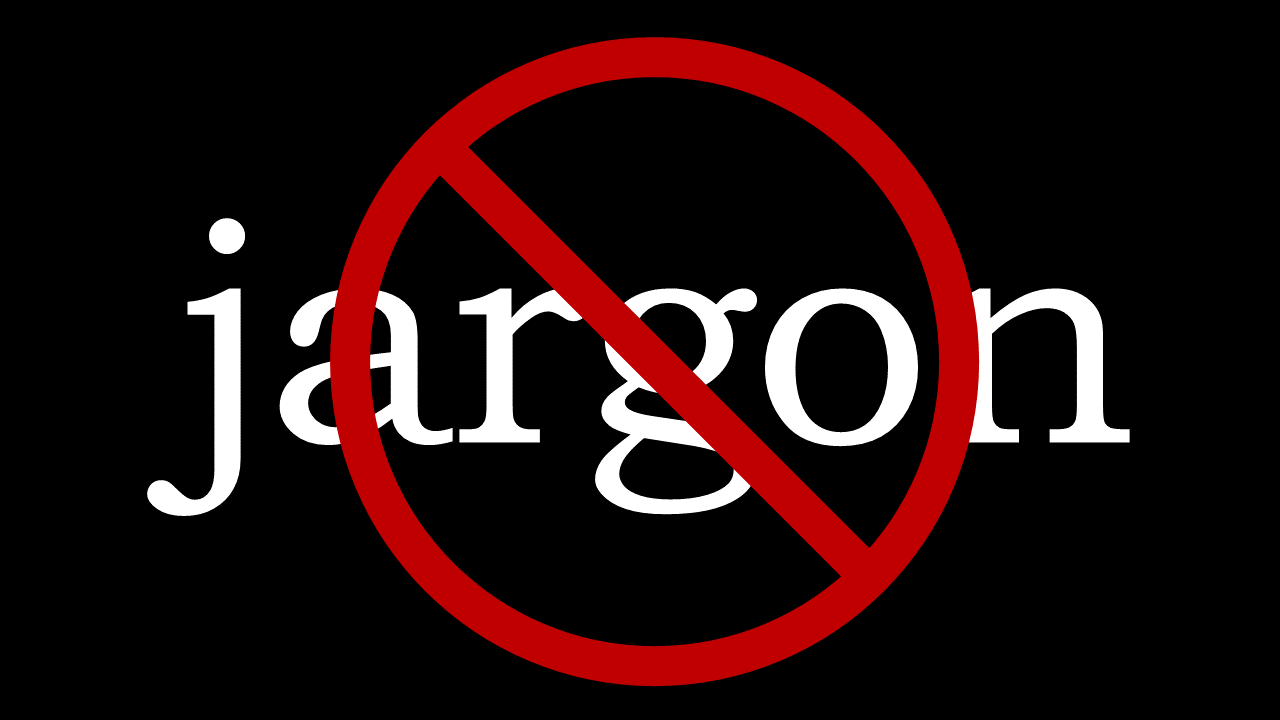A common assumption about plain language is that it requires “dumbing down” material for readers to their disadvantage. But plain legal language researcher and advocate, Cheryl Stephens, knows that’s not true. Plain language is as clear, understandable, and simple as the situation allows and it is effective for its purpose.
Drawing on empathy and neuroscience research, Cheryl helps professionals and businesses understand why plain language is important and teaches them to create documents that readers will understand.
We spoke with Cheryl about misconceptions about plain language and the many approaches scientists use to predict whether a document is readable. In this interview, you’ll learn how readability and writeability work together and gain a framework for legal literacy. Read on for Cheryl’s lessons in plain language.
What is your role and how is it connected to plain language?
My work has focused on plain language since 1990. I teach it at the college level, provide staff training, design curricula for others, research it and related fields, and practice it. I have written four books about plain language.
What prompted your interest in plain language?
I was creating a document database in a law firm in the late eighties for a corporate and commercial law department. I worked with a lawyer committee for a year to develop a style guide that 30 lawyers could agree on. Then Australian Robert Eagleson toured Canada promoting plain language in law and I found my focus. I left the firm to develop a course on plain legal writing for a continuing legal education society. That’s when I took a workshop from Gary Kinder who later developed WordRake.
What is the difference between plain language and plain English?
The biggest difference is that plain language can be applied to all languages, whereas plain English only applies to English. But, for plain English, there’s also this perception that the work is about grammar, words, and language. That is too narrow a view. In addition to word choice, plain language work includes a process for applying classical rhetorical process, document design, information architecture, and design thinking. Plain language professionals use the same design-thinking stages as are used in Legal Design and other design-thinking applications.
How are readability and plain language related?
Plain language goes beyond word choice and includes document design; it is more closely related to writeability which is about the steps you can take in the process of writing, rewriting, and editing to make your writing readable. (You can read more about Edward Fry of The Fry Graph Readability Formula who created the Fry Writeability Checklist and coined the term writeability in these links.)
Comparatively, readability, as it is commonly understood, relates to countable parts of a sentence, and predicts whether the reader will have difficulty understanding your writing.
Most people are familiar with readability scores that you’ll find in writing software. These scores come from mathematical formulas that measure the number of letters and syllables in a word, then the number of words in a sentence. But counting syllables and words is only a proxy for whether the reader can understand the content.
Reader understanding depends on:
- Legibility: Can the written text be read easily? (Think of your doctor’s eye chart.)
- Readability: Can the words be identified and the sentences de-constructed?
- Comprehension: Can the message be understood as intended by the writer?
The writer facilitates reader understanding by writing in plain language and taking other steps based on document design and information architecture to make the information easy to understand. Whether the writer has achieved that goal can be measured by speed, efficiency, and recall; electrical activity in the brain; or the effort needed from the reader balanced by the amount of information that the reader gains.
For more on the research, see my literature review of neuroscience research. To implement the advice, consider my Brain-based Writeability Guidelines.
You can get a sneak peek at a new comprehensibility formula which considers additional features of language here.
What are unexpected ways that plain language comes up in law, healthcare, and finance?
The problem exists in all fields. But let me give you an example of the various people perspectives in criminal law: the victims, the courtroom witnesses, the jurors, the accused, and the family members of all these.
Everyone needs information about their situation, their rights, and obligations, in simple, clear language. And it is not just a language issue. A study by the Canadian Bar Association and Canadian Bankers Associations in the early nineties lead to recognition of the requirements described as “legal literacy.”
To have legal literacy, clients need to grasp the:
- legal context of their problem
- legal process required to resolve the problem
- complex legal documents and procedures, and
- specialized terminology
General literacy is the ability to use printed and written information to function in society, to achieve one’s goals, and to develop one’s knowledge and potential. Consistently over 30 years, statistics show that half the population does not have adequate skills even for general literacy.
What are some factors that indicate a need to write in plain language?
- Is the reader human?
- Is the information needed by the intended reader?
- Is the reader stressed or in a hurry or experiencing information overload?
How does plain language impact access to justice?
Legal language, even without archaic grammar and legalese jargon, is a hurdle to accessing justice. In a series of interviews with people engaged in legal innovations that increase access to justice, the interviewees agreed that plain language itself is the foundation for delivering justice.
What’s the most important—yet simple—change professionals can make to consumer-facing documents to improve understanding?
It takes a change of attitude and empathy for the reader. If you can’t conjure the empathy on your own, try putting a photo on your desk of a favored niece or nephew. Write to make that person understand. Explain it as you would to your grandmother over dinner: take care and be respectful.
What’s one piece of advice that you would offer to help a professional start using plain language?
Focus on what the client or customer needs to know for the task at hand. Keep it simple, clear, and as brief as possible. And be human about it.
Beyond writing with simpler words and shorter sentences, what else can professionals do to communicate better for the public’s benefit?
Everything, including business contracts, can use page layout and document design to create information sources that are easy to process.
I am an advocate for using the modern resources available to us. With my own writing, before I send it to a human editor, I use WordRake, Readability.io, and PerfectIt, among others. In recent years, I have had to edit many commercial legal documents and I use Legal Sifter and Kenneth Adams’ A Manual of Style for Contract Drafting.
What’s the most convincing statistic that you can share to convince professionals to start using plain language?
At least half of the adult population does not have functional literacy or numeracy skills. For example, my edition of WordRake tells me that only 33% of the adult population could understand this article.
What are a few surprising areas where plain language is valued?
Academia and Science should value it more. Researchers pursue citations of their work. But they should consider how much more widely their work could circulate if it were written in accessible language.
About Cheryl Stephens
Cheryl Stephens, of Plain Language Wizardry, is the author of Plain Language Legal Writing and Plain Language in Plain English, a guide to principles and techniques to shift to plain language. She lives in the Pacific Northwest but has provided training and workshops to clients all over North America and recently worldwide.
Actively engaged in plain language activity since 1989, Cheryl Stephens founded the Plain Language Association International in 1993 and Plain Canada in 2020. She has been active in both the legal community and in plain language training and her research is ongoing.
Plain Language and Clear Communication Interview Series
This interview is part of a series produced in connection with WordRake’s support for the Access for All: Plain Language is a Civil Right conference. WordRake is editing software for sophisticated writers who must communicate clearly. It improves writing by simplifying and clarifying text, cutting jargon, and recommending plain English replacements. WordRake runs in Microsoft Word and Outlook, and its suggestions appear in the familiar track-changes style. You decide when to run WordRake and which edits to accept, so you get quality and speed without sacrificing control. Editing for clarity and brevity has never been easier. Try WordRake for free for 7 days.






